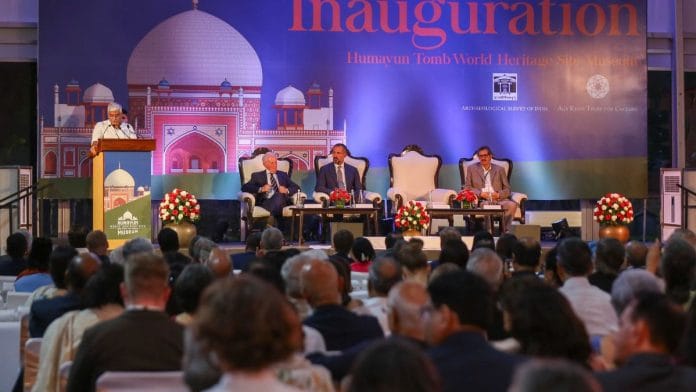New Delhi: A striking sang-e-marmar stone chair captivated guests during the inauguration of the underground Humayun World Heritage Site Museum on Monday. It belonged to the last Mughal emperor Bahadur Shah Zafar and marked the end of an empire that spanned more than 300 years. The new museum—near the mausoleum of the second Mughal emperor, Humayun, in Nizamuddin—captures this passage of time.
“The Aga Khan Trust for Culture and the Archeological Survey of India have created a case study to demonstrate how the quality of life of local communities can be significantly improved by addressing the government’s development objectives along with restoration of national heritage,” said Minister of Culture and Tourism Gajendra Singh Shekhawat at the inauguration ceremony.
The museum is the result of conservation efforts by the Archaeological Survey of India and the Aga Khan Trust for Culture, and includes Humayun’s Tomb, Sunder Nursery, and Nizamuddin Basti. The 10,000 sq ft space serves as a gateway to 14 World Heritage monuments across Sunder Nursery and Humayun’s Tomb complex.
In his speech, Shekhawat touched upon the importance of the site itself. It carries a legacy spanning thousands of years, and is linked to the ancient city of Indraprastha, the Pandavas’ capital in the Mahabharata, he said. And while the focus of the museum is the Mughals and Humayun in particular, some of the exhibits touch upon Delhi’s 3,000-year-old history with artefacts from Purana Qila excavations. “It’s a revelation of the material wealth of various dynasties who built at this site over the centuries,” the minister said.
Shekhwat highlighted India’s “deep-rooted cultural matrix” by discussing the images of Dara Shikoh’s Persian version of the Upanishad alongside his Quran, and Rahim’s couplets inscribed on the walls alongside his translations of the Ramayana. Both Rahim and Dara Shikoh are buried in this area and are among the generations of saints associated with this sacred landscape.
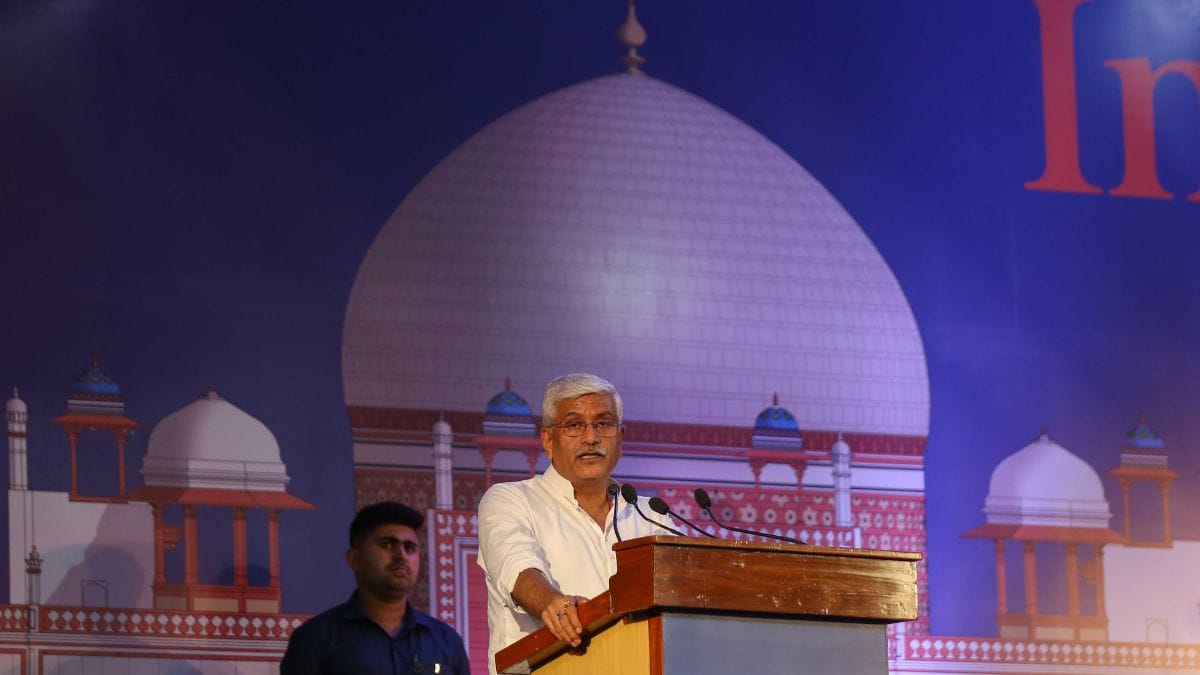
Restoration and preservation
The museum displays more than 500 never-before-seen artefacts, including Mughal miniatures, manuscripts, significant architectural elements, coins, contemporary art, astrolabes, celestial spheres, stone inscriptions, glassware, and textiles.
One of the major attractions of the site is an immersive gallery featuring a 270-degree screen, offering virtual tours of the World Heritage sites’ monuments and gardens. The gallery also includes an animated feature on the evolution of Humayun’s Tomb over 500 years.
In 2013, the Aga Khan Trust for Culture, with the Archaeological Survey of India, removed 1,000 metric tons of concrete and thousands of square meters of cement from the tomb to prevent damage. The Trust has restored and preserved this heritage and its surrounding monuments.
Since the early 14th century, when the revered Sufi saint Hazrat Nizamuddin Auliya settled here, the area—named after him—has been continuously inhabited. It has seen the construction of monumental structures, including mausoleums, mosques, garden pavilions, step wells, bazaars, serais, and gateways.
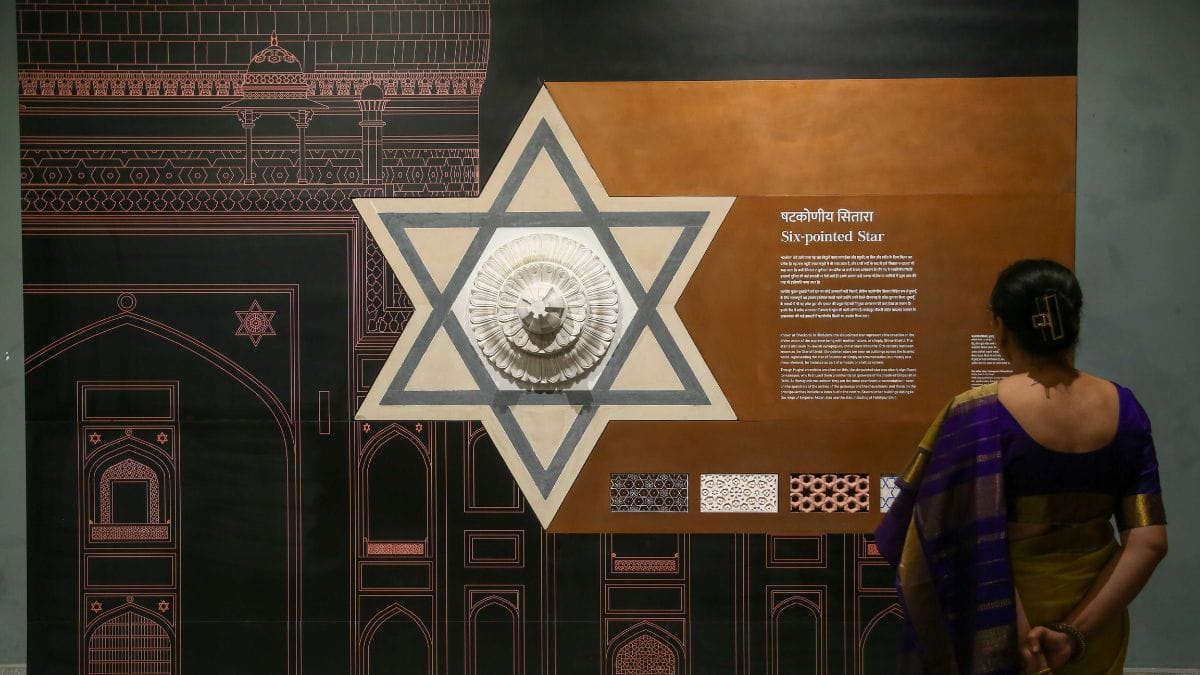
Shekhawat recalled Prime Minister Narendra Modi’s address at the 46th World Heritage Committee meeting when he said, “Virasat bhi, Vikas bhi.” The nation’s cultural heritage is one of its greatest assets, providing identity and immense value, said Shekhawat, while highlighting the importance of national monuments, museum collections, and intangible heritage like music, dance, and craft. Preserving and showcasing this heritage is a crucial responsibility for India’s citizens and the world.
“India is committed to engaging local communities towards heritage conservation,” he added.
In one section of the museum, a large screen plays qawwali alongside a historical Mughal jali piece that visitors can touch and photograph. Nearby, intricately carved daggers and knives are displayed in glass cases. A small glass wall displays information about the history of Nizamuddin Auliya.
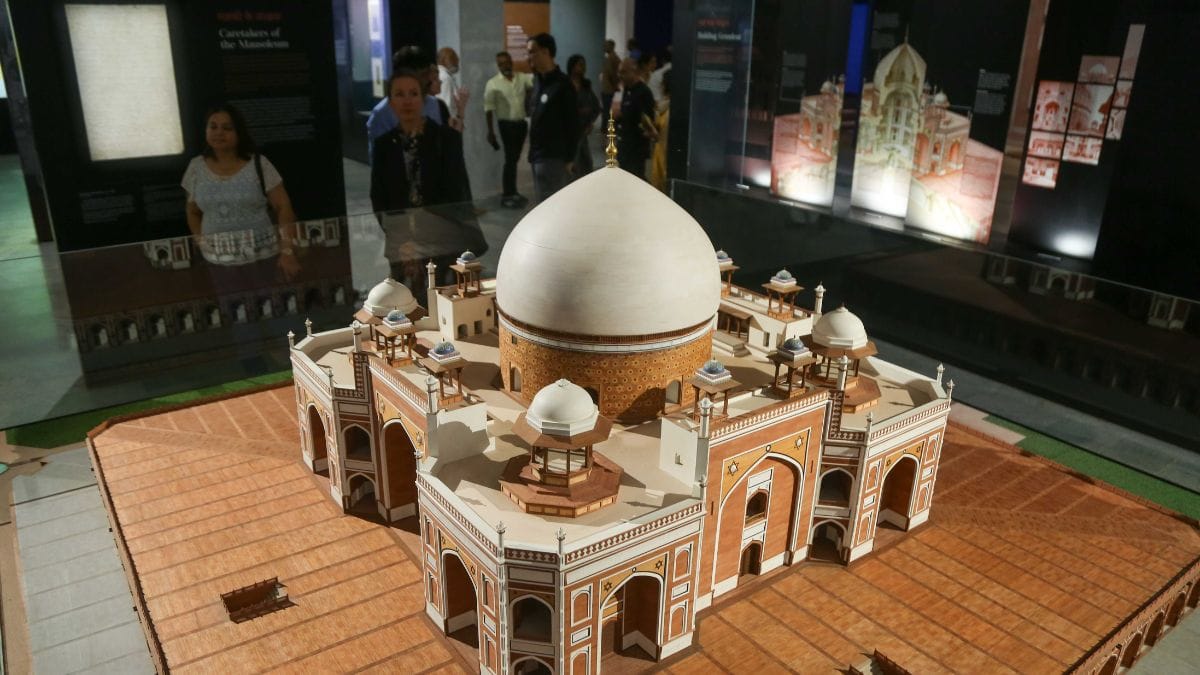
History of the people
Prince Rahim Aga Khan, who was part of the inaugural ceremony, pointed out that since 2007, more than 60 monuments have been preserved. Sunder Nursery was opened to the public in 2018, providing a green space in the heavily populated area of the nation’s capital. Today, these sites receive more than three million visitors per year.
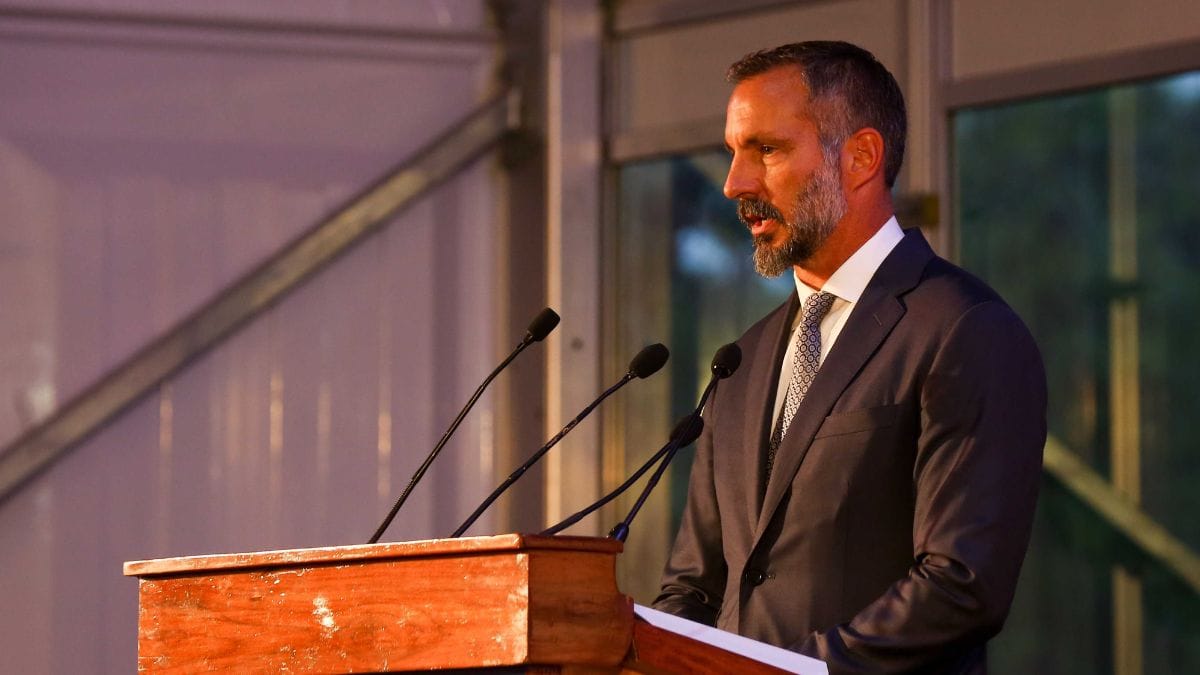
“The Museum serves as a link, not only reuniting Humayun’s Tomb and Sunder Nursery, but also bridging the gap between history and the present day. Museums and historic landmarks preserve and reveal the story of humanity,” said Khan. “Inherently, they are places that foster connections among people as we delve into our collective, intricate, and occasionally disputed past and consider how we can collaboratively shape a unified and better future.”
Near the courtyard of Humayun’s Tomb, in a tent filled with Delhi’s elite, ten craftsmen took a bow. It was their patience and knowledge of the craft that helped this project come to fruition.
Luis Monreal, Spanish historian and general manager of the Aga Khan Trust for Culture, noted that in poor neighborhoods, culture often represents the sole economic asset. They use culture as a lever to improve overall quality of life.
“The museum sheds light on the biography of human rights and the human condition in detail. It is not an easy task, as it provides a unique model for a range of artefacts related to the practice of Sufism,” he said.
The museum will be open to the public from 30 July.
(Edited by Ratan Priya)



